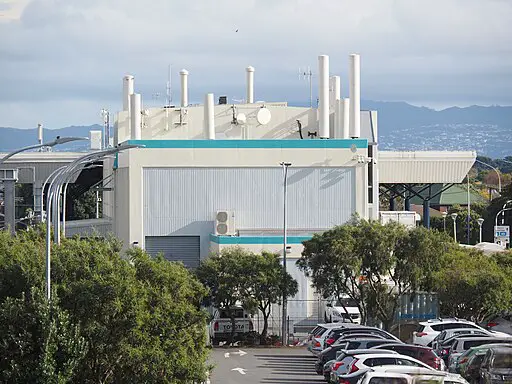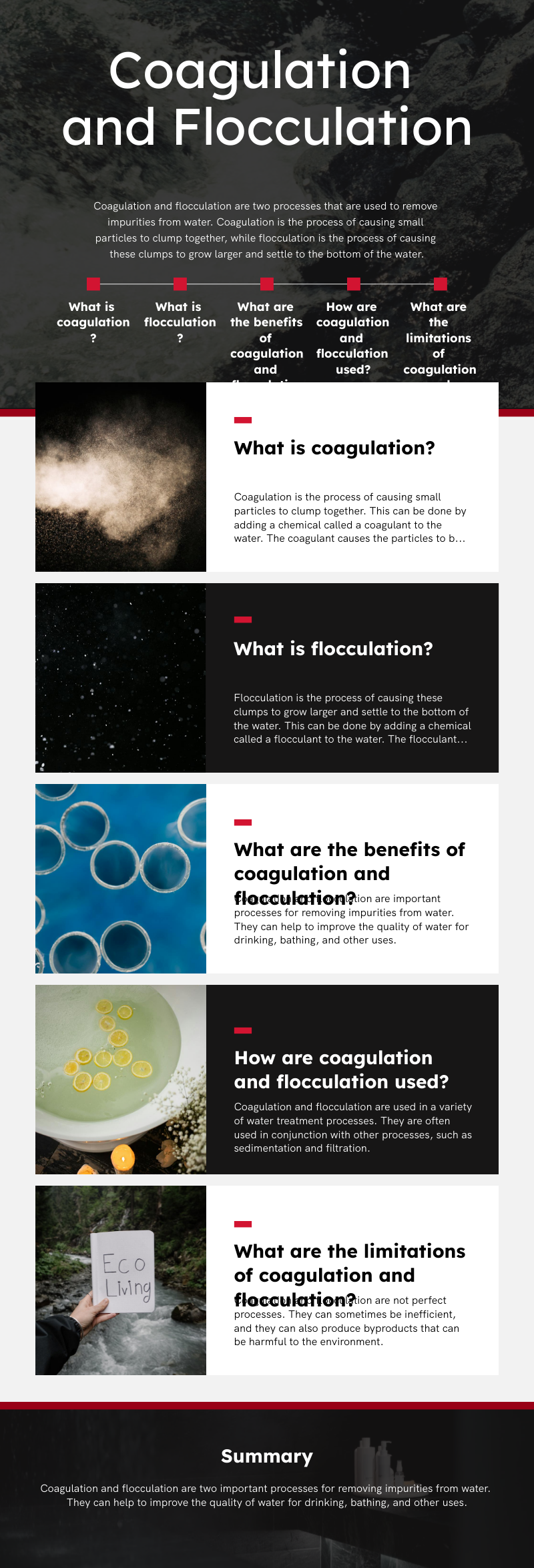In water treatment, coagulation clumps particles, and flocculation helps form larger, settleable masses for efficient removal in the purification process.
Did you know that coagulation and flocculation are two essential water treatment processes that play a crucial role in enhancing filtration efficiency and improving water quality? These methods involve the addition of chemicals that cause particles to clump together, making them easier to remove from water. But what sets coagulation and flocculation apart? Let’s dive deeper into these water treatment processes and explore their key differences.
Key Takeaways:
- Coagulation and flocculation are water treatment processes used to enhance filtration efficiency and improve water quality.
- Coagulation involves the addition of coagulant chemicals to destabilize particles and promote clumping.
- Flocculation further agitates the water to encourage particle adhesion and the formation of visible flocs.
- Coagulation primarily focuses on particle clumping, while flocculation promotes the growth of flocs through gentle mixing.
- Both processes are crucial for water treatment to remove suspended solids and clarify water.
Understanding Coagulation in Water Treatment

Coagulation is an important step in water treatment that involves the use of coagulants to destabilize and clump together fine particles suspended in water. Common coagulants used in water treatment include aluminum sulfate, aluminum chloride, sodium aluminate, ferrous sulfate, ferric sulfate, ferric chloride, ferric chloride sulfate, hydrated lime, and magnesium carbonate.
The coagulation process is essential for removing negatively charged particles such as dirt, clay, and organic matter from water. By adding coagulants, these particles become destabilized, allowing them to stick together and form microflocs.
Exploring Flocculation in Water Treatment
Flocculation is a vital step in water treatment that comes after coagulation. It’s about gently mixing the water to create bigger clumps called flocs. These flocs start as tiny groups during coagulation and grow into larger ones through collisions. Proper mixing is crucial because the longer and more collisions there are, the bigger and heavier the flocs become. This makes them settle at the bottom, making it easier to remove unwanted particles from the water.
To make flocculation even more effective, we use special substances called flocculants. These are like helpers that strengthen the flocs and make them heavier, improving their settling ability. So, in a nutshell, flocculation is all about getting particles to stick together and settle down, and adding flocculants makes the whole process work even better in water treatment.
Coagulation vs. Flocculation: Similarities
In water treatment processes, coagulation and flocculation play crucial roles in enhancing the removal of suspended particles from water and improving filtration efficiency. These two water treatment methods share several key similarities:
- Particle Adhesion: Both coagulation and flocculation aim to promote particle adhesion, allowing particles to clump together and form larger aggregates.
- Enhanced Filtration: Coagulation and flocculation work together to increase particle size, making it easier for filtration systems to remove suspended particles from water.
- Water Clarification: By promoting particle aggregation, coagulation and flocculation assist in clarifying water by reducing turbidity and removing organic and inorganic solids.
- Chemical or Polymer Addition: Both processes involve the use of chemicals, such as coagulant compounds, or polymers, like flocculants, to destabilize particles and encourage clumping.
While coagulation primarily focuses on particle clumping, flocculation takes the process further by promoting the growth of visible flocs through gentle mixing. By combining these two water treatment methods, water treatment facilities can achieve better water quality and ensure the safe removal of suspended particles.
Comparison Table: Coagulation vs. Flocculation
| Aspect | Coagulation | Flocculation |
|---|---|---|
| Objective | Promote particle clumping | Promote the growth of visible flocs |
| Main Process | Destabilize particles and encourage clumping | Gently mix to promote particle adhesion |
| Chemicals Used | Coagulant compounds (e.g., aluminum or iron-based) | Polymers or flocculants |
| Results | Formation of microflocs | Formation of visible flocs |
Types of Coagulants Used in Water Treatment
In water treatment, different types of coagulants are used to achieve effective coagulation. Two common categories of coagulants are aluminum coagulants and iron-based coagulants.
1. Aluminum Coagulants
Aluminum coagulants, such as aluminum sulfate, aluminum chloride, and sodium aluminate, are widely used in water treatment. These coagulants have the ability to neutralize the charges on suspended particles, promoting their clumping together to form larger flocs.
2. Iron-Based Coagulants
Iron-based coagulants, including ferrous sulfate, ferric sulfate, ferric chloride, and ferric chloride sulfate, are also frequently employed in water treatment processes. These coagulants destabilize particles and facilitate their aggregation, aiding in the formation of larger flocs.
Additionally, water treatment facilities may utilize coagulant aids such as hydrated lime and magnesium carbonate to enhance the coagulation process.
Below is a table summarizing the types of coagulants used in water treatment:
| Coagulant Type | Examples |
|---|---|
| Aluminum Coagulants | Aluminum sulfate, aluminum chloride, sodium aluminate |
| Iron-Based Coagulants | Ferrous sulfate, ferric sulfate, ferric chloride, ferric chloride sulfate |
| Coagulant Aids | Hydrated lime, magnesium carbonate |
These coagulants play a vital role in water treatment, facilitating the removal of suspended particles and improving water quality.
Choosing the Right Coagulant for Water Treatment
When it comes to water treatment, selecting the right coagulant is crucial. Various factors, such as availability, affordability, and effectiveness, need to be considered to ensure optimal results. There are two main types of coagulants commonly used in water treatment: metal coagulants and organic coagulants. Let’s explore each type and their benefits.
Metal Coagulants
- Aluminum Sulfate: Widely used and highly effective, aluminum sulfate promotes coagulation and is readily available.
- Sodium Aluminate: Another popular choice, sodium aluminate is cost-effective and helps destabilize particles for efficient water treatment.
- Ferric Sulfate: Known for its strong coagulating properties, ferric sulfate effectively removes suspended particles from water.
- Ferric Chloride: With its ability to rapidly coagulate particles, ferric chloride is often preferred for water treatment processes.
Organic Coagulants
- Advantages: Organic coagulants offer several advantages, including low charge density, longer polymer chains, and the ability to remove organic precursors from water.
- Types: Common organic coagulants include synthetic and natural polymers, such as polyamine-based coagulants and chitosan.
When deciding between metal coagulants and organic coagulants, it is essential to consider the specific requirements of the water treatment process and desired outcomes. Factors such as the type and concentration of contaminants, the pH level of the water, and the target particle size play a significant role in determining the suitable coagulant. Consulting with water treatment experts and conducting rigorous testing can help determine the most effective coagulant for your water treatment needs.
| Metal Coagulants | Advantages | Disadvantages |
|---|---|---|
| Aluminum Sulfate | Highly effective in coagulation | May contribute to aluminum concentration in treated water |
| Sodium Aluminate | Cost-effective | Requires higher doses compared to other coagulants |
| Ferric Sulfate | Strong coagulating properties | Can lower the pH of water |
| Ferric Chloride | Rapid coagulation | Can increase chloride concentration in treated water |
| Organic Coagulants | Advantages | Disadvantages |
|---|---|---|
| Synthetic Polymers | Low charge density, effective removal of organic precursors | May be more expensive than metal coagulants |
| Natural Polymers | Biodegradable, environmentally friendly | Effective at high doses |
Understanding the Role of Polymers in Flocculation
In water treatment, after coagulation, comes flocculation, a crucial step. Long-chain compounds called polymers are key players in this process. These polymers, whether natural or synthetic, boost the strength and settling weight of flocs, which are clumps of particles. When added to coagulated water, polymers create stronger forces between particles, causing them to collide and form larger flocs.
Natural polymers are eco-friendly and efficient, aiding in stable floc formation, while synthetic polymers offer improved performance with tailored structures. Regardless of the type, polymers are vital. They help create bigger and heavier flocs that settle easily, making it simpler to remove unwanted particles from the water. Essentially, polymers enhance the efficiency of water treatment by promoting particle bonding during the flocculation process.

Importance of Coagulation and Flocculation in Water Clarification
Coagulation and flocculation are crucial steps in the process of water clarification. These processes are essential in removing suspended particles from water and improving filtration efficiency, ultimately enhancing the overall water quality.
Coagulation: Coagulation plays a key role in water treatment by destabilizing particles in the water. This process involves adding coagulant chemicals, such as aluminum or iron-based compounds, to the water. The coagulants neutralize the charges on the suspended particles, allowing them to clump together and form larger particles called flocs.
Flocculation: Flocculation further enhances the particle adhesion process. After coagulation, the coagulated water undergoes gentle mixing to promote the formation of visible flocs. This process encourages more particle adhesion and helps to increase the size of the flocs.
The combination of coagulation and flocculation significantly improves water clarification. Suspended particles, including organic and inorganic solids, are effectively removed through the formation of larger flocs. The process reduces turbidity, making the water clearer and more aesthetically pleasing, while also enhancing filtration efficiency.
Water clarification is crucial for various applications. In drinking water treatment, the removal of suspended particles ensures the safety and potability of the water. In wastewater treatment, effective coagulation and flocculation processes are essential for the proper functioning of treatment systems, discharge compliance, and environmental protection.
Table: Comparison of Coagulation and Flocculation in Water Clarification
| Aspect | Coagulation | Flocculation |
|---|---|---|
| Process | Destabilizes particles and promotes clumping | Enhances particle adhesion and forms visible flocs |
| Objective | Destabilize particles for easier removal | Form larger flocs for improved filtration efficiency |
| Chemicals | Coagulant compounds (e.g., aluminum or iron-based) | Organic polymers (flocculants) |
| Benefits | Removes suspended particles | Increases floc size and enhances water clarity |
| Applications | Drinking water treatment, wastewater treatment | Drinking water treatment, wastewater treatment |
Effective coagulation and flocculation processes are essential for water treatment facilities to ensure the removal of suspended particles, improve filtration efficiency, and maintain high water quality standards. These processes play a vital role in providing clean and safe water for various uses.
Coagulation and Flocculation in Water Treatment Methods
Coagulation and flocculation are crucial steps in water treatment. First, coagulation uses chemicals like aluminum or iron compounds to clump together particles in the water. This helps remove impurities. Then comes flocculation, where gentle mixing encourages more particle sticking, forming larger, easier-to-remove clumps called flocs. This step is vital for improving water quality by capturing tiny particles that may have escaped coagulation.
The dosages of coagulant and flocculant, often organic polymers, are carefully controlled for optimal results. Coagulant dosage ensures proper clumping, while flocculant dosage promotes floc growth and strength. Managing these doses helps water treatment facilities effectively separate flocs from the clarified water, ensuring cleaner and safer water for us to use.
Conclusion
Coagulation and flocculation are vital in water treatment. Coagulation makes particles clump using chemicals, while flocculation goes a step further, creating larger, visible flocs. Together, they make water clearer and safer by increasing particle size and improving filtration.
Coagulation destabilizes particles by adding special chemicals, causing them to clump into microflocs. This process neutralizes negatively charged particles. Flocculation uses gentle mixing to grow flocs, forming larger pin-flocs. Coagulation focuses on clumping particles, while flocculation encourages floc collision and adhesion. Coagulation uses chemicals like aluminum or iron, while flocculation employs organic polymers as flocculants. Both processes are vital for effective water treatment and ensuring clean and safe drinking water.
FAQ
What is the difference between coagulation and flocculation in water treatment?
Coagulation involves the addition of coagulant chemicals to water to promote particle clumping, while flocculation further enhances the formation of visible flocs through gentle mixing.
What are coagulants used in water treatment?
Common coagulants used in water treatment are aluminum-based compounds, such as aluminum sulfate, aluminum chloride, and sodium aluminate, as well as iron-based compounds, including ferrous sulfate, ferric sulfate, ferric chloride, and ferric chloride sulfate. Hydrated lime and magnesium carbonate can also be used as coagulants.
How does flocculation work in water treatment?
Flocculation involves the gentle mixing of coagulated water to promote the formation of larger flocs. It encourages further particle adhesion and the creation of visible flocs called pin-flocs, which later grow into larger macroflocs.
What are the similarities between coagulation and flocculation?
Both coagulation and flocculation aim to enhance the removal of suspended particles from water and promote particle adhesion. They work together to increase particle size, improve filtration efficiency, and clarify water.
What are the types of coagulants used in water treatment?
Types of coagulants used in water treatment include aluminum coagulants (such as aluminum sulfate, aluminum chloride, and sodium aluminate) and iron-based coagulants (like ferrous sulfate, ferric sulfate, ferric chloride, and ferric chloride sulfate). Coagulant aids such as hydrated lime and magnesium carbonate may also be utilized.
How do you choose the right coagulant for water treatment?
The choice of coagulant depends on factors such as availability, affordability, and effectiveness. Aluminum sulfate, sodium aluminate, ferric sulfate, and ferric chloride are commonly used due to their availability and cost-effectiveness. The choice of coagulant also depends on specific water treatment requirements and desired outcomes.
What is the role of polymers in flocculation?
Polymers used in flocculation are long-chain compounds that help strengthen and increase the settling weight of flocs. They promote particle bonding through enhanced van der Waal’s forces and hydrogen bonding, aiding in the growth of flocs and the formation of larger, more easily settled particles.
Why are coagulation and flocculation important in water clarification?
Coagulation and flocculation are crucial steps in water clarification processes as they help remove suspended particles, improve filtration efficiency, and enhance water quality by reducing turbidity and removing organic and inorganic solids.
How are coagulation and flocculation utilized in water treatment methods?
In water treatment methods, coagulation and flocculation are typically employed at the initial stages. Chemical dosing is used to introduce coagulant chemicals, promoting particle clumping. The water then undergoes flocculation through gentle mixing to encourage more particle adhesion and the formation of visible flocs. The dosage of coagulant and flocculant is carefully controlled to achieve optimal treatment outcomes.
What are the key differences between coagulation and flocculation in water treatment?
Coagulation primarily focuses on particle clumping by destabilizing particles, while flocculation promotes the growth of visible flocs through gentle mixing. Coagulation comes before flocculation in the water treatment process.
Source Links
- https://www.reynoldsculligan.com/differences-between-coagulation-flocculation-water-treatment/
- https://www.wcs-group.co.uk/wcs-blog/coagulants-flocculants-wastewater-treatment
- https://www.differencebetween.com/difference-between-coagulation-and-vs-flocculation-in-water-treatment/
Image Credits
Featured Image By – USEPA Environmental-Protection-Agency, Public domain, via Wikimedia Commons
Image 1 By – Marshelec, CC BY-SA 4.0 <https://creativecommons.org/licenses/by-sa/4.0>, via Wikimedia Commons









